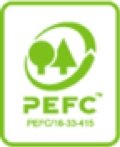Author Royalties Explained
This is one of those basic topics about which you may be confused if you’re just entering the world of self-publishing. You’ve heard the term ‘royalties’ but you’re not quite sure how these work. I’ll try to explain as simply as possible.
The concept of a royalty is that the author receives a fee for each book sold. The exact fee can’t be generalised because it depends on a variety of factors and these factors change with each book.
The journey of a book sale will involve three main areas:
- The Retailer (Amazon, WHSmith, Waterstones etc), which is advertising and selling the book directly to the consumer. The Retailer will take a percentage of the RRP as a ‘Trade Discount Fee’. This percentage changes from retailer to retailer; an average Trade Discount percentage for a retailer such as Amazon is usually around 35%.
- The publisher and printers, who will set an agreed cost to produce this book.
- The author, who has written the book and holds the rights to royalties for all new copies sold, and who has set the RRP (Recommended Retail Price) for the title.
But you might be asking, ‘What does this mean in a monetary sense for me?’ I will use the example below to try and help shine some light on this somewhat tricky subject.

 BookWIZARD
BookWIZARD BookVAULT
BookVAULT




